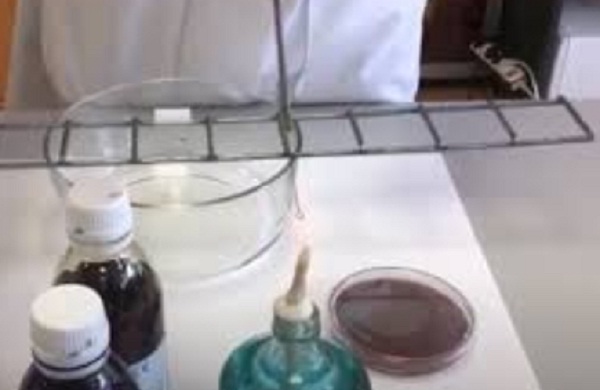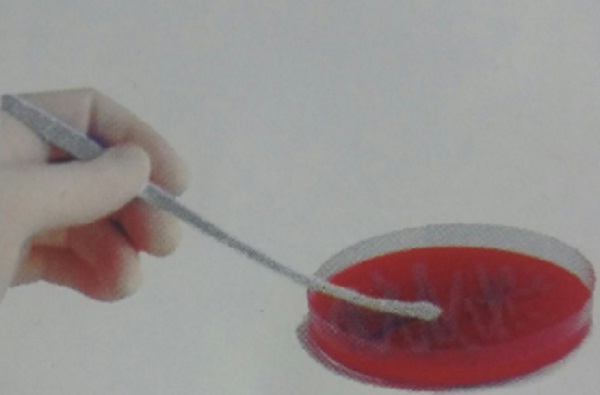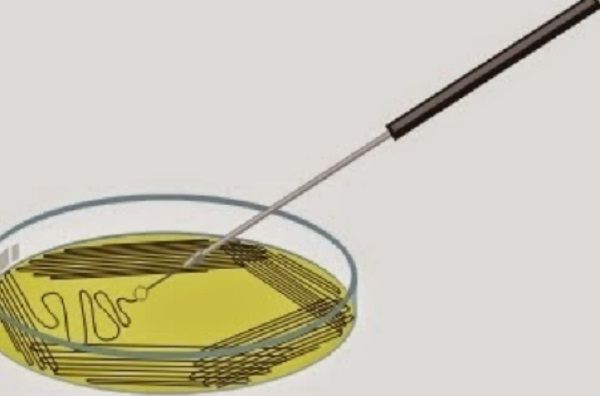The inoculating loop is a necessary instrument in microbiology laboratories, for mycology, bacteriology, virology and parasitology. Where by means of manipulation, inoculum transfer colonies are sown. Which will then be studied to inform patients of the results obtained.
What is a inoculating loop?
It is a working instrument used by microbiologists. To carry out the sowing of microbial cultures (from viruses, bacteria, fungi, parasites). It is also known as inoculation asa, seeding asa, scientifically as Kohle's asa. The material of manufacture is nickel chromium (nichrome), platinum, disposable plastic.
It consists of a base with platinum material, aluminum attached to a nichrome filament, tungsten, platinum at the tip has an earring measuring 5 mm. They can be non-calibrated or calibrated, permanent or disposable use. Permanent handles are sterilized in the flame of the lighter. They are more durable and are reused. The disposable ones come sterilized and after use they are discarded.
Types of handles
The forms in which they are presented are varied, in an uncalibrated way, it is used to take the inocula and take them to culture. For the execution of extended on slides and fluting of the inoculum. Calibrated, take a specific amount of inocula from the suspension. The margin of error depending on the angle and shape of the container.
They can be disposable or permanent.In experimental studies they are very demanded. The wedges are used for sampling. In obtaining bacterial mass. The straight or on needle, called thread loop and the puncture technique is used. As a spatula, it is used when microbial agents generate hard and dry colonies.
The "L"-shaped, mold crops are repotted. With a sharp tip, for taking very small colonies and subculturing them. The platinum handle with calibrated ring, transfers, drags and transports inocula.


Bacteriological asa what is it for?
The flat handle with non-calibrated thread is used in the dragging of a culture colony to where its identification will be executed. The uncalibrated ring is used for inoculations and for sowing by stretch marks. Platinum ring – calibrated, it is used for taking samples for urine culture, where the inoculum (suspension, liquid or solid) is taken by dragging it to another medium.
Also with its help the smear can be executed. For extended on the slides. Wedges handles, they are made sowing in simple zigzag and no need to isolate colonies. Loop ring, calibrated, takes specific amounts of microbial suspension. It is used when the inoculum needs to comply with the technique.
How is the inoculating loop used?
The working procedure consists first of all in using the flame of the lighter for burning the red-hot handle. Allow the handle to cool and proceed to the sowing of two or more bacteria on a nutrient agar plate. Then the cross-striation method should be developed on the plate, which means rotating the agar box.
To form a pentagon, in order to dilute or separate the inoculum. Perform other seeding separately in the same way as controls. Identify the sown agar boxes. Invert all the boxes cover down so that they do not evaporate. Incubate for 24 hours at a temperature of 35°C. At the end, re-burn the handle in the red-hot flame.
Write down the observations, the characteristics of the colonies of each species, explain, deduce the results in comparison with the control samples. On experience it is necessary to take the sterilized handle on fire. Introduce it into the study substance by dragging a small volume of microorganisms. From the mother or standard solution, to the culture for sowing or re-inoculation.


Handle function
Based on the types of bacteriological handles that exist, a microbiological work of which we have is carried out: In general, the handles have the function of dragging, transferring and transporting the inocula. It allows the obtaining of isolated colonies to study them in order to identify them when the culture is not pure. For the taking of certain samples.
The performance of a striation by exhaustion to isolate microorganisms. In education, as a complement to theory, in the area of natural sciences, executing laboratory practices. It facilitates the sharp observation of bacteria in such a way that their shape can be appreciated. It allows the classification of microorganism by the staining method. Permanent asas are easy to use and are durable.
Bacteriological asa how to calibrate
The bacteriological handles, must be calibrated due to the need that the results of the study have to be exact, with precision and reliability. The existence of international organizations that take care of the manufacture of these objects. They have developed tools for the exact leveling of such an instrument.
The one that consists in using a nickel-chromium handle, the wire diameter of which measures 0.20 mm plus, minus 0.06 mm, from 0.001 Ml. To move it by a metal bar with two ends. In one the caliber is 3,988 mm while the other has a caliber of 4,039 mm. Considering that the ring goes through the bar.
Then the handle will be calibrated with proper shape and volume, it should enter only by the less caliber end. If you scroll by the larger caliber you have to adjust.
Bacteriological asa price
Insert yourself in the publications of mercado libre Mexico, round nichrome bacterological asa, 1/100 and 1/1000, in 45 dollars. From nichrome, round, 1/100 and 1/1000, 25 pieces for $549. Microbiological handle "L", three for $85, round handle 1/100, two for $120. In mercado libre Colombia, Asa punta fina de plático, 12 units for 422.90 dollars.
A set of 6 handles, in ferronickel wire at 82900 dollars. With asa hoop, from 1Ul to 10Ul, from 61.76 euros to 72.52 euros, Platinum with hoop, 1uL to 10 uL at 169 euros.
The inoculating loop is extremely important for the public health area, so I invite you to read this article whenever you want.

